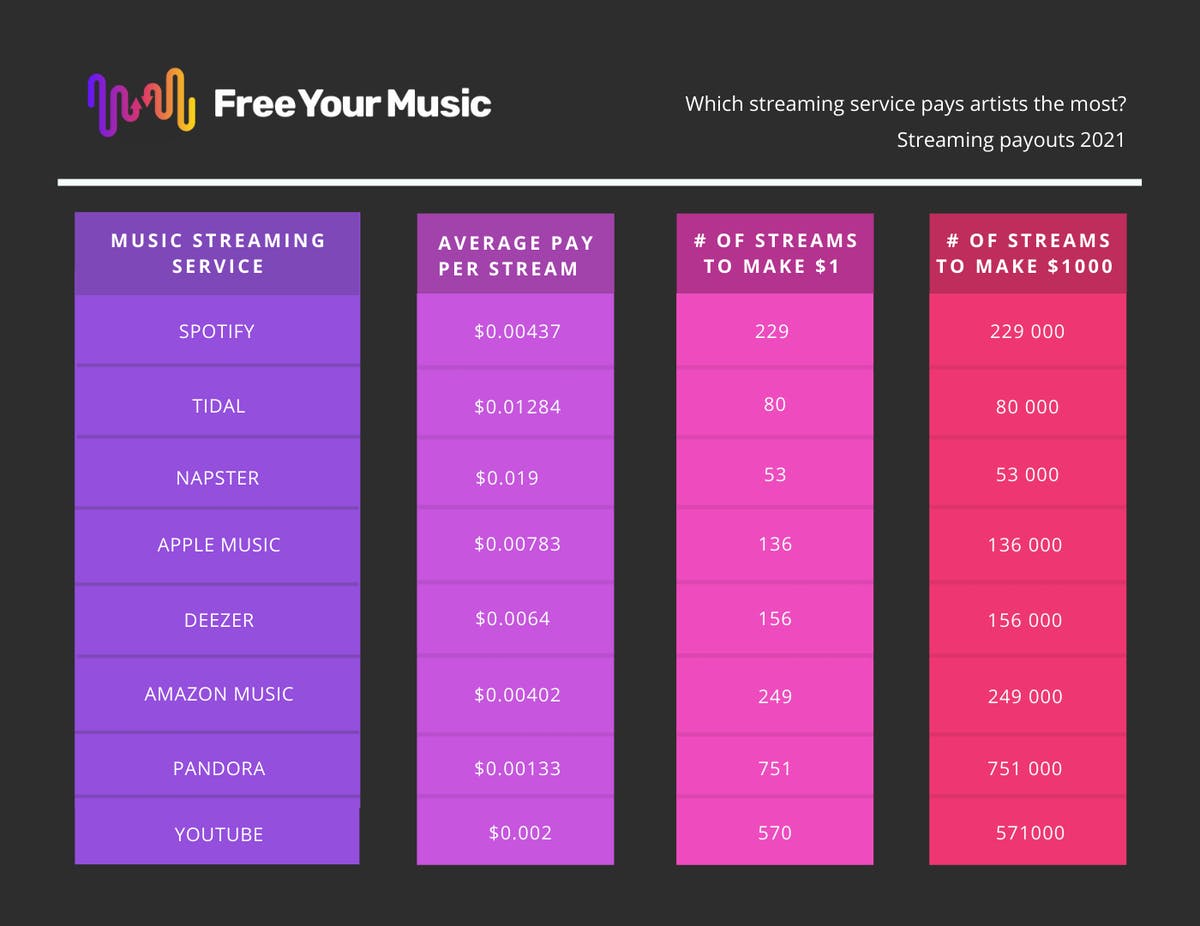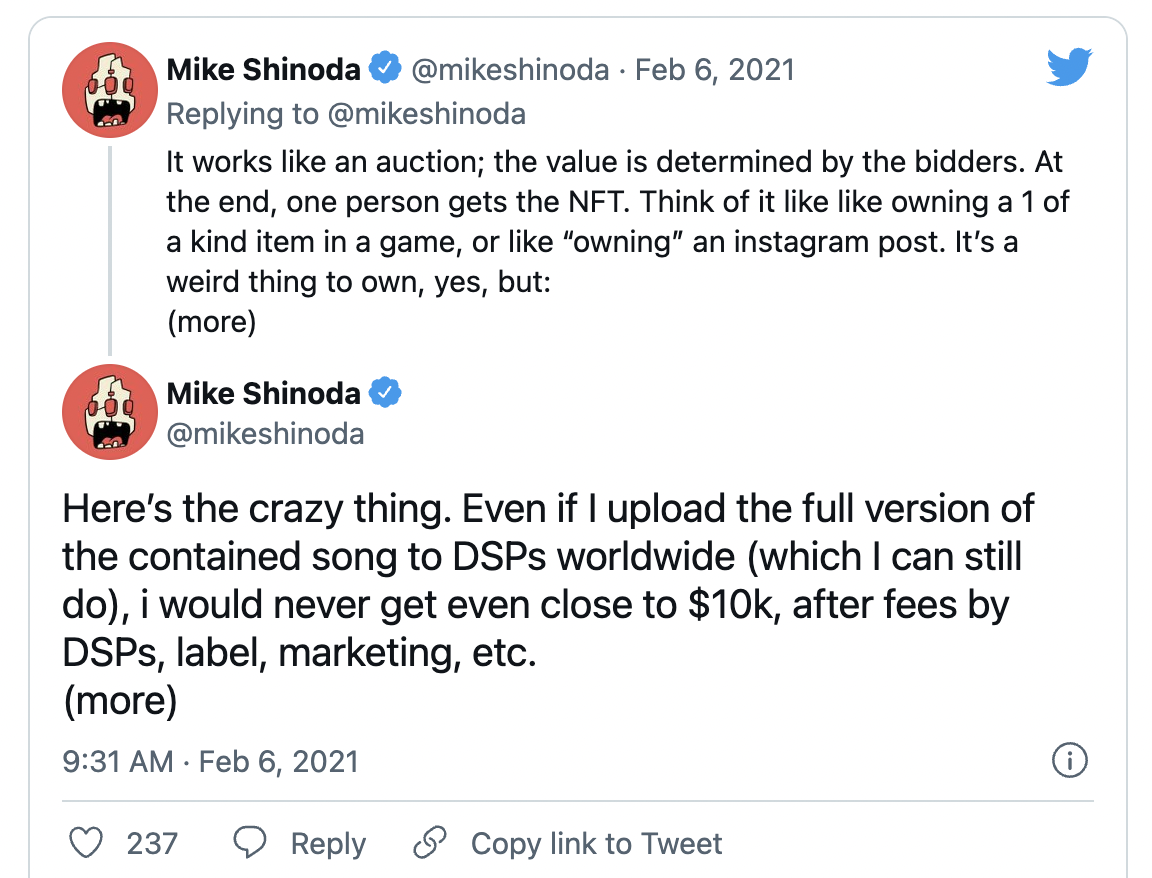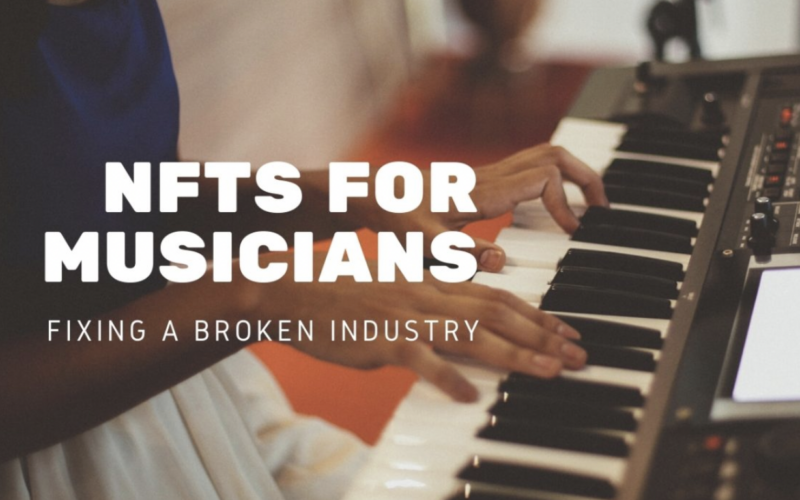Troy Warren for CNT #NFT
In 2017, the music industry generated $43 billion in revenue, but only 12% went to artists. Music labels, publishers, and distributors tend to take the lion’s share. This inequity has been a long standing problem in the music industry, where the artists who create the actual content are rarely paid their fair share.
On Spotify, the average payout to an artist per stream is $0.004 – almost nothing. Spotify also allows free streaming of music – of their 75 million subscribers worldwide, only 20 million actually pay for a premium account. Most digital streaming platforms tend to do this to keep subscription prices low and gain more customers.
In 2014, Taylor Swift briefly removed all her music from Spotify, because she felt this model of revenue distribution was unfair to artists. Swift shared her views in an article in the Wall Street Journal:
“Music is art, and art is important and rare. Important, rare things are valuable. Valuable things should be paid for. It’s my opinion that music should not be free, and my prediction is that individual artists and their labels will someday decide what an album’s price point is.”
How Much Do Independent Artists Make From Streaming Services?
Taylor Swift makes a good point, but the truth is, top artists like her are able to make millions off their music regardless. It’s smaller independent artists who really struggle to make a decent profit under the current paradigm.

The infographic above shows how many streams it would take an artist to make $1000 on each platform available today. An average liveable wage in the USA is around $4000 a month. This means that an artist on Spotify would need 1 million streams per month just to keep food on the table.
Enter NFTs
NFTs are changing this paradigm by allowing artists to have more control over the distribution and monetization of their work. After receiving a $10,000 bid for one of his NFTs, Linkin Park co-founder Mike Shinoda tweeted:

In his tweet, Shinoda points out that NFTs provide a way for artists to avoid streaming platforms, labels, and other intermediaries that would take a cut of profits. This is a game-changer not just for big names like him, but for smaller independent artists especially.
Efficient monetization is just one of the benefits NFTs provide to independent musicians. NFTs represent a new way to release music and engage with fans, and they can provide additional value to fans while simultaneously increasing profits for artists.
What NFTs Can Do For Independent Artists
1. Connecting Artists To Fans Directly
NFTs provide a direct line of distribution and communication between artists and fans. Royalties are built into smart contracts and automatically distributed to the artist throughout the lifetime of the work. Sidestepping intermediaries means greater profits for artists, while allowing them to engage more directly with their audiences. When content and communication comes directly from an artist, and not through an agency or a distribution platform, it is more authentic and meaningful. For independent artists, this also gives them access to a global audience without having to convince the traditional gatekeepers of the industry.
2. Adding Value Through Unlockable Content
NFTs can come with unlockable content. With the purchase of an NFT song, buyers can get access to additional content such as behind-the-scenes videos, messages from the artist, exclusive album artwork, and much much more. The possibilities are limitless, and this is a great way for artists to increase the value of their NFTs. Independent artists who may not already have a well-known brand and a huge following can utilize this to make their work more attractive to buyers.
3. Creating New Means of Engagement
Because NFTs are unique, and ownership can be tracked on the blockchain, NFTs can act like a membership card that entitles owners to certain perks. Artists could allow their NFT holders access to special events, concerts, or exclusive content in the future. In this way, they enable a mode of engagement over a long period of time, maybe even throughout the lifetime of the artists themselves. For example, Kings of Leon’s latest album was released as an NFT which entitled holders to front-row seats at all their future concerts. Knowing that they will receive benefits far beyond just the initial purchase is a big draw for buyers.
4. Greater Creative Control
NFTs come with a lot of functionality. Aside from selling music alone, videos, art, and many other forms of expression can be combined to create a more complex product. Copyright permissions can be written into NFT metadata, which means that artists can allow fans to use samples of their work in their own art. For extra exclusivity, NFTs can even be programmed to self-destruct, or be non-transferable from the first buyer. NFT music isn’t just music, it’s programmable music, which means that artists have much more control over what happens to their work, even after it has been released.
So far, the majority of NFTs have been digital art. We’ve already seen how NFTs have begun to transform the art market and strengthen the creator economy, and NFTs can do the same for the music industry.



































